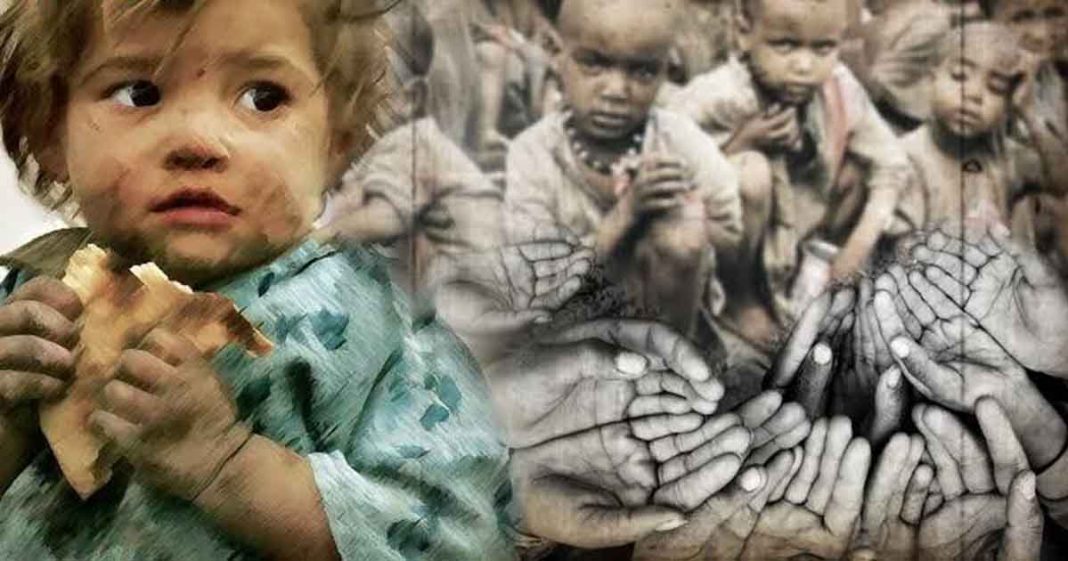Malnutrition has for long been one of the biggest threats to the South Asian region. Stunted and wasted growth from inadequate minerals and vitamins plague the region, particularly Pakistan. According to the World Health Organization, malnutrition refers to deficiencies or excesses in nutrient intake, imbalance of essential nutrients, or impaired nutrient utilization.
It is mainly caused by poor dietary routines and a lack of balanced nutrition at the correct time, especially in children under 52 months. Malnutrition in children in Pakistan is booming at a rapid pace. This is due to a lack of awareness by parents on what is needed to address the issue and, in many cases, their lack of resources. The issue is easily resolved if children eat products with good iron sources including green leafy vegetables, organ meat (such as liver) or products fortified with iron.
Read more: CCI launches an important project to overcome malnutrition in children
According to the National Nutrition Survey in 2018, 49.1 percent of children of Pakistan under the age of five are malnourished, with iron deficiency being the most prevalent deficiency. According to the same report, 40.2 percent of children under five are stunted, while 17.7 percent are acutely affected (wasted). Malnutrition not only results in reduced growth, low birth weight, stunted development, and impaired cognition, but, according to a study conducted by the Journal of Pakistan Medical Association in 2017, nearly 800,000 children die every year, of which 280,000 deaths occur due to malnutrition. These deaths are related to the poor dietary nutrition of children and their mothers and require governments to create an immediate and actionable strategy to control and mitigate the effects of malnutrition.
The cost of poor nutrition also carries a significant economic burden
A recent assessment by the Global Panel on Agriculture and Food Systems for Nutrition suggested that undernutrition, micronutrient deficiencies, and other malnutrition-related deficiencies cost the world economies up to $3.5 trillion per annum. This impairs the government’s ability to tackle poverty or achieve other developmental goals.
Apart from children, women are also highly vulnerable to iron deficiency and other forms of malnutrition. Micronutrients deficiencies are prevalent among women. The cost of this translates into the birth of malnourished children and low work output and decreased productivity.
Malnutrition burden for Nation
In 2017 Ministry of Planning Development and Reform, in collaboration with the United Nations World Food Programme, calculated the gross cost of malnutrition to the country’s economy and accounted for a loss of ~$7.6 billion, or three percent of the annual GDP (gross domestic product). Malnutrition or at least one form of malnutrition, acute or chronic, deficiencies or obesity affects people of every socioeconomic background. Still, women and children, especially those of an impoverished socioeconomic background, remain most vulnerable to it.
The current government, which eulogized over the youth’s potential, has made efforts to reduce malnutrition in the country. The PTI government launched the Ehsaas Nashonuma Programme. Six Nashonuma centers were opened in the Kalat and Zhob districts of Balochistan to tackle stunted growth and improve the nutrition of the poorest through a combination of cash stipend and nutritional food. Beneficiaries of the Ehsaas Programme are identified through the Ehsaas ecosystem. It has yielded results as Pakistan witnessed a 33 percent reduction in deaths of children from malnutrition and a 15 percent reduction in stunting; as revealed by the WFP report in 2019, still, the country has a long way to go.
Read more: PM Khan launches “Nashonuma” project to reduce malnutrition problem
Simple Solution
For starters, the government could also look to fortify food products apart from its current focus on salt, ghee, and wheat and move towards fortifying milk powders with iron. Already fortification of staple foods such as wheat with iron or salt with iodine has shown promising impacts and is a cost-effective way to yield tremendous output. Pakistan is a nation of tea drinkers, and fortification of milk products would be especially useful for vulnerable and poorer groups that drink more tea due to it giving them energy and milk for young children.
Read more: A collective response must for tackling malnutrition in country
Recently groundbreaking research was conducted in Massey University New Zealand, which has come up with a new and improved iron source (known as Iron+), which offers three times more absorption in the body than the existing best available source of iron. With this breakthrough, we can reinforce the prevention of Iron deficiency in Pakistan and build a healthier generation for a better future. Overall improving the nation’s health and consequent productivity needs to become a cross-party issue of agreement.














